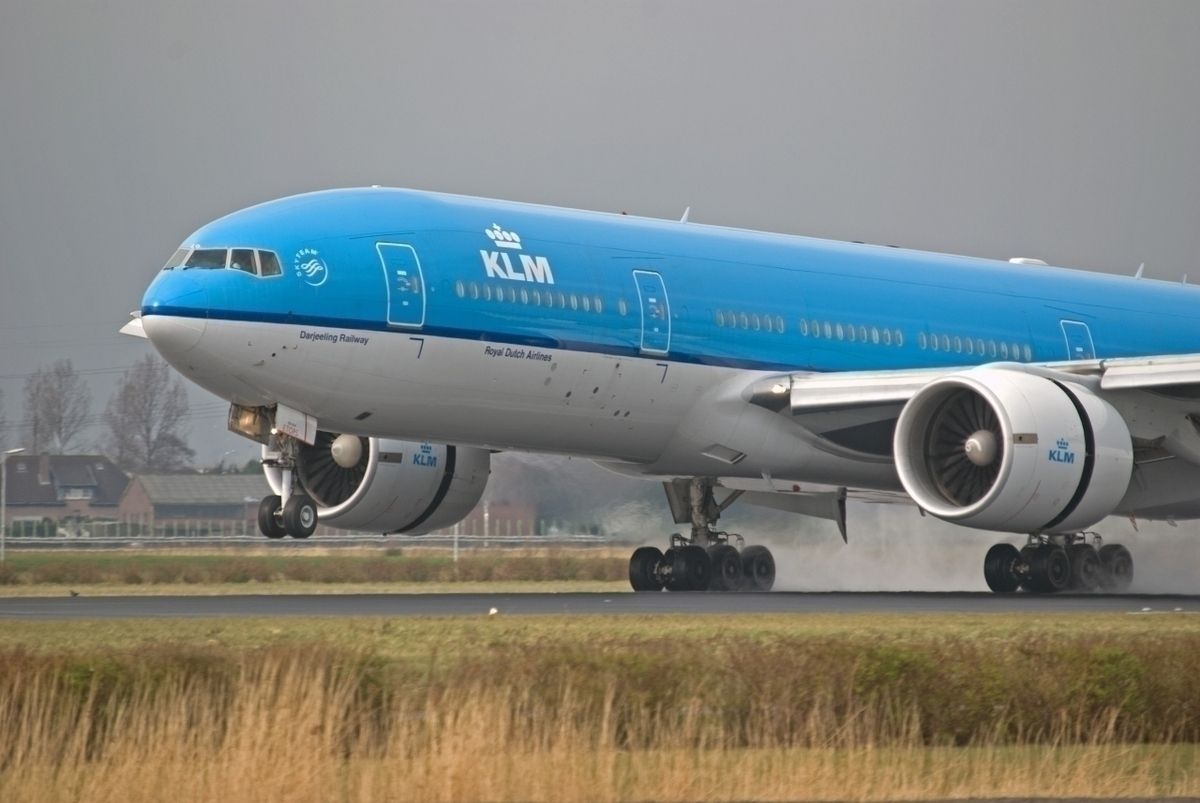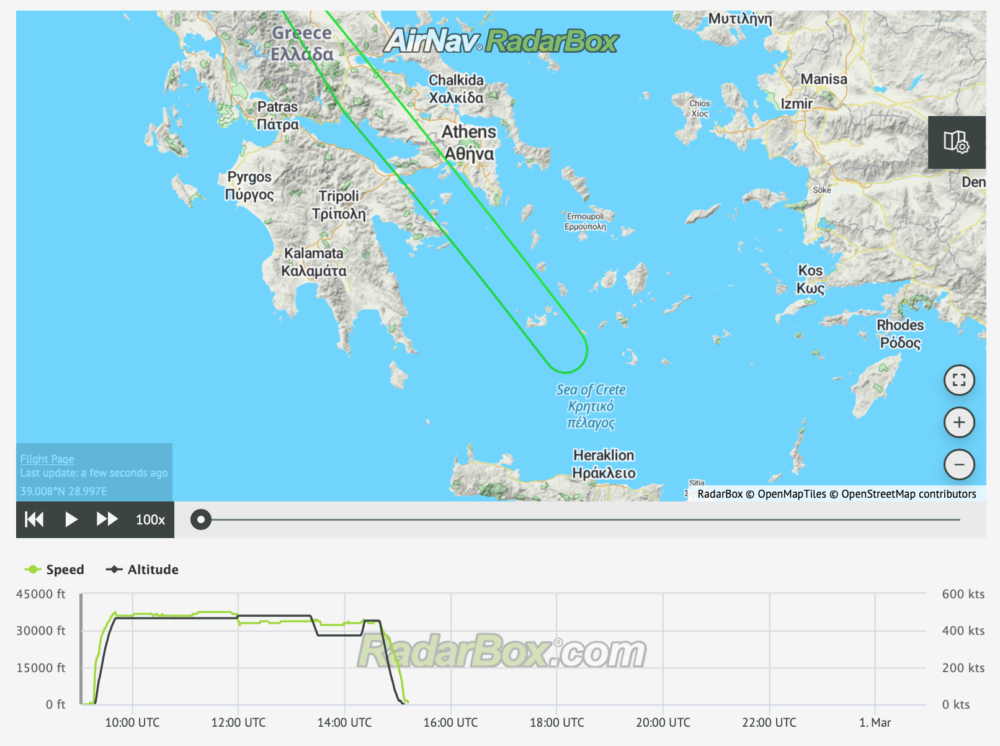On February 28th, after flying for some three hours from Amsterdam, the crew of a KLM 777-200ER made the decision to turn around after reporting a bird strike. The aircraft was on its way to Tanzania but turned around over the Sea of Crete just after flying over mainland Greece.
A six-hour flight to nowhere'
Diversion flights that return to the origin airport are often nicknamed 'flights to nowhere.' Sunday's KLM incident was one of these flights, spending about six hours in the air only to return to Amsterdam Schiphol airport.
The aircraft, a Boeing 777-200ER, registered as PH-BQD, departed Amsterdam on February 28th at 09:50 local time. The aircraft crossed over the European continent and was approaching the Mediterranean before the crew turned around, backtracking and finally returning at 16:11.
The total flight duration was listed as six hours and nine minutes. According to RadarBox.com and other sources, the reason for this diversion was a bird strike.
A photo posted to Twitter shows the damage caused by the strike, with a dent visible on the engine cowling.
Stay informed: Sign up for our daily aviation news digest.
A bird strike at cruising altitude?
One comment/question to the RadarBox.com Twitter post sums up our own reaction to this report: "...did it hit at 35,000 feet?" Indeed, with such little information available, it's difficult to know exactly what happened and why the aircraft turned around after multiple hours at cruising altitude, reporting a bird strike as the reason.
In case you weren't aware, birds don't typically fly at the same altitude as aircraft. If they did, we would probably be seeing many more bird strike reports and emergency diversions. Indeed, most bird strikes tend to take place just after take-off and just before landing - when aircraft are at the same altitude as local birds.
Some think that the strike took place in Amsterdam, and there was some time spent on the discovery and decision-making process. However, this has not been confirmed.
Some birds can actually fly quite high
The intriguing fact we discovered in reporting this incident is that some birds are indeed capable of flying at the cruising altitude of aircraft. In fact, the bird of prey known as Rüppell's vulture (Gyps rueppellii) is reported to have a maximum flight height of 11,300 meters, or 37,100 feet. However, it appears that this particular high-flying creature is only found in North and East Africa.
Meanwhile, the common crane (Grus grus) and bar-headed goose (Anser indicus)Â have been recorded flying as high as 33,000 feet and 29,000 feet, respectively. What's more, the migratory patterns of the common crane do cover the area where the KLM 777 turned around over Greece.
Of course, there's a big difference between the jet's 35,000 feet cruising altitude and the maximum recorded height of the crane, which still doesn't provide us with a satisfying answer.
What do you think happened here? Could a bird strike have taken place at such a height? Or is there another explanation for the turnaround, three hours into the journey? Let us know in the comments.


